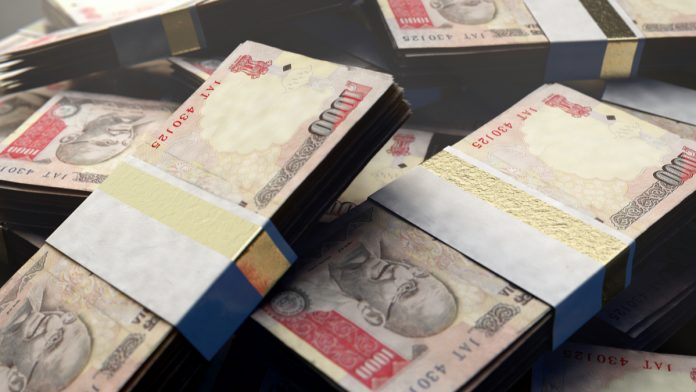- Indian Rupee (INR) falls after two days of gains
- Oil eases back for a second day
- US Dollar (USD) falls versus major peers
- US retail sales bear forecasts
The US Dollar Indian Rupee (USD/INR) exchange rate is rising after two days of losses. The pair fell -0.08% in the previous session, settling on Monday at 83.19. At 18:30 UTC, USD/INR trades +0.03% at 83.23 and trades in a range of 81.52 to 83.28.
Meanwhile, the Indian Rupee edges lower despite a pullback in both oil prices and the US dollar.
Oil prices eased again on Tuesday for a second straight day after rising almost 7% across last week amid concerns over the escalation of the conflict in the Middle East.
Instead, news that U.S. President Biden would be arriving in Israel tomorrow has raised optimism that a de-escalation of tensions in the region could still be a possibility.
The US Dollar is rising versus the Rupee but falling versus its major peers. The US Dollar Index, which measures the greenback versus a basket of major currencies, trades -0.10% at the time of writing at 106.03, after losses yesterday.
The US dollar is falling on Tuesday as investors weigh up stronger than expected US Economic against news that the US will tighten rules on AI chip sales to China and after comments from Federal Reserve official barking.
US retail sales jumped 0.7% in September, and retail sales for August were revised higher 0.8%, suggesting that. The consumer continues to spend well despite the Federal Reserve raising interest rates aggressively. This was well ahead of forecasts of a 0.3% rise in retail sales in September.
The data set would suggest that households are getting used to the higher interest rates as the new normal, and shopping habits aren’t being affected.
Meanwhile, US industrial production was also stronger than expected after fooling in the previous month.
The data points to a stronger start to the US economy in the third quarter and investment bank Goldman Sachs raised its GDP growth estimates for the third quarter for the US to 4% at an annualized rate which would mark the fastest pace since the end of 2021.
The data comes as the Federal Reserve considers whether to raise interest rates again at the November meeting.
Federal Reserve official Thomas Barkin said that he believed that the central bank had a restrictive policy stance which would suggest that he may be in favour of keeping rates unchanged at the coming meeting.





